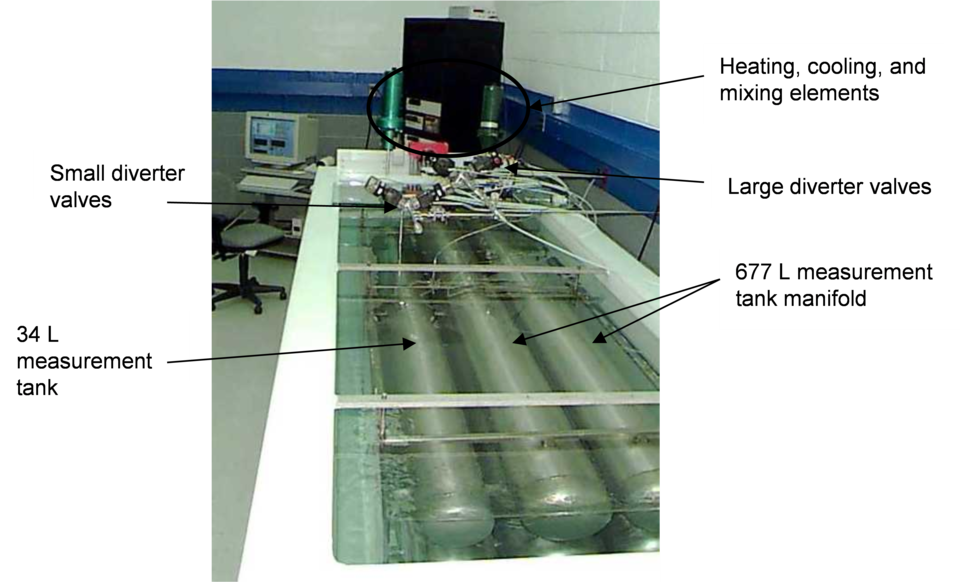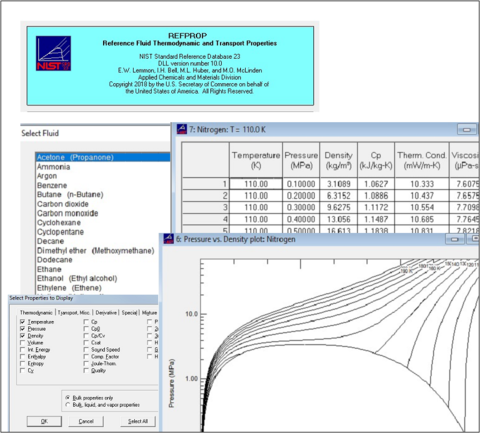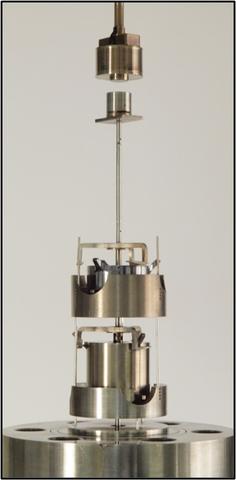Summary
A variety of gases are used during production of semiconductors for deposition, lithography, etching, doping, annealing, and chamber cleaning. These processes require accurate and reproducible gas flow measurement for many gas species over a wide range of pressure and temperature conditions. Accurate gas flow measurements require low uncertainty gas flow primary standards, the foundation for traceability for the tens of thousands of flow meters used by the semiconductor fabrication industry. Validated physical models of the flow meters and thermophysical properties of the gases are essential for extending calibration results to new, sometimes toxic gases introduced to the manufacturing process.
Description
A type of flow meter called a mass flow controller (MFC) is used to regulate gas flow in order to produce the desired structures during chip fabrication. As semiconductor manufacturing advances, the requirements on MFC performance are increasingly strict: any process variation can reduce device yield. In the year 2000, flow uncertainty of 1 % of full scale was acceptable, now 0.1 % of reading is desired. The industry requires interchangeability of MFCs: if an MFC fails, they need to replace it with a flow meter that provides the same flow behavior in order to successfully apply the same chip manufacturing recipe. Chip manufacturers require new process gases, lower flows, and better response times from MFCs to support new chip technologies.
Each model of MFC has a list of gas correction factors in its manual. This is a simple multiplier to convert a calibration in nitrogen to a calibration in some other gas. For many gases, a simple multiplier is grossly inadequate to correct the performance of the flow meter. The MFC calibration curve is complex and poorly understood for many gases of interest (SF6, C4F8, NF3), partially because of a lack of primary flow standards that can safely handle toxic gases and a lack of low uncertainty gas property values. Experimentally validated physical models for the relevant flow meters coupled with accurate gas properties (e.g., viscosity, density, thermal conductivity) allow the chip industry to extrapolate a nitrogen calibration to the new, often toxic gases used to produce semiconductors.
CAPABILITIES
The Fluid Metrology Group in the Sensor Science Division of the Physical Measurement Laboratory has best in the world capabilities over the entire range of gas flows of interest to chip manufacturers in non-hazardous gases. The 34 L and 677 L pressure-volume-temperature-time (PVTt) standards measure flow with uncertainty < 0.025 %. NIST research on the rate-of-rise gas flow measurement method extended capabilities down to 0.1 cm3/min, meeting the needs of the chip industry for ever smaller flows. The gas flow capabilities have been proven by numerous interlaboratory comparisons. These capabilities are the foundation for traceability and uncertainty for the tens of thousands of MFCs used in the chip fabrication industry.

NIST gas flow standards are also a critical resource for research on the flow meter physical models. An experimentally validated physical model allows meter manufacturers and users to understand the performance of meters in new applications, such as a new gas or a gas at a different temperature or pressure condition than those used during calibration of the meter. The NIST Sensor Science Division is the world leader in developing physical models for flow meters, including laminar flow meters, critical flow venturis, and Coriolis meters. NIST collaborates on calibration standards and flow meter research with MFC manufacturers and end users. For example, we work with a meter manufacturer to share experimental data and apply a NIST-developed laminar flow meter model to reduce the uncertainty of their products in new gases for the semiconductor industry.
The development of physical models requires accurate thermophysical properties (e.g., density, viscosity, heat capacity, and thermal conductivity) for the relevant gases. The Thermophysical Properties of Fluids Group, Applied Chemicals and Materials Division in the Materials Measurement Laboratory provides the most accurate models for thermophysical properties through the NIST REFPROP computer program, distributed by NIST Standard Reference Data. It incorporates a graphical user interface and can also be accessed through user applications via a dynamic link library (dll) or included source code. REFPROP currently provides properties for a significant number of process gases, although many of the more hazardous gases (e.g., silane) are not included at present. The group has state-of-the art measurement capabilities for measurement of thermophysical properties such as pressure-volume-temperature, phase equilibrium, heat capacity, speed of sound, viscosity, and thermal conductivity. Combined with modeling expertise, they will provide the necessary thermophysical property information to enable the development of flow standards for semiconductor process gases.



